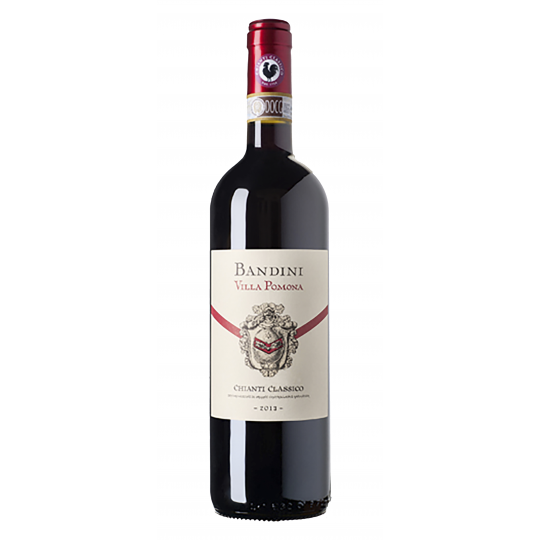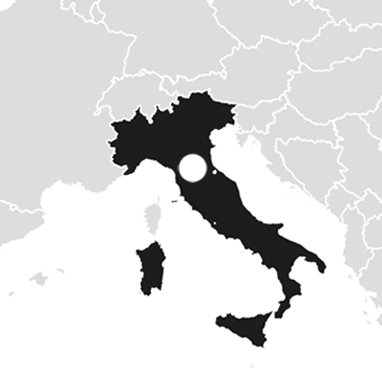Waarom deze wijn?
Dit is een geweldige Chianti Classico die (nog) betaalbaar is! Een rechtstreekse afspiegeling van hun geweldige terroir en noeste arbeid. De jaargangen 2012 en 2013 (!) verdienden de maximale score van gambero Rosso (oftewel: 'excellent wines'). Monica en Enrico, die inmiddels met de grootste wijnmakers in Chianti wedijveren, lieten zich hun mening over hun 2013 ontlokken: 'misschien wel nog groter en evenwichtiger'. Liefhebbers van een 'state of the art' Chianti Classico: krachtig kurkdroog met veel kracht en karakter, grijpen hun kans!
De smaak
Groot enthousiasme is opgewekt voor deze pure, prachtige traditionele Chianti Classico. De wijn is robijnrood, subtiel kruidig en veel diepte in het fruit, goed geproportioneerde smaak, krachtig, elegante structuur, intense afdronk.
De details
type wijn: full bodied, verfijnd
druivensoort: 95% Sangiovese, 5% Colorino
teelt: biologisch
opvoeding: 10 maanden op grote eiken houten vaten, 1 jaar op fles
alcoholgehalte: 13,50 % vol.
afsluiting: natuur kurk
drinktemperatuur: 18-20 graden
bewaarpotentieel: 2020
spijs-aanbeveling: vlees- rood- en gestoofde vleesgerechten, wild- diverse, pasta- mooie pasta's met vlees, kaas- sterke harde kazen, bij openhaard
De prijzen elders?
Wij vergelijken het voordeel altijd met de prijzen in de online-markt. Belangrijk is dat er dan wel 'appels met appels' worden vergeleken; dus precies dezelfde wijn per 6 flessen van (bij voorkeur) hetzelfde jaar èn bij jou thuisbezorgd (de bezorgtarieven elders zijn meegenomen in de prijscheck).
Deze unieke Chianti Classico is elders in Nederland verkrijgbaar voor € 16,74.
De oorsprong
'Although history takes us back to 1899 when this estate was founded in the Castellina in Chianti area, Villa Pomona achieved today's brilliant level of quality thanks to the hard work of Monica Raspi and het husband Enrico Selvi, who embarked o a very interesting journey ten years ago. The vineyards are organically farmed, growing Sangiovese and small quantities of Colorino and Cabernet Sauvignon. The winery prefers a traditional style, with large oak casks, and the resulting wines are far from ordinary, endowed with strong personality and a solid, impressive link to the terroir.' Gambero Rosso 2015
Slimme weetjes: Chianti van weleer
A Chianti wine [?kjanti] is any wine produced in the Chianti region, in central Tuscany, Italy. It was historically associated with a squat bottle enclosed in a straw basket, called a fiasco. however, the fiasco is only used by a few makers of the wine now; most Chianti is now bottled in more standard shaped wine bottles. Baron Bettino Ricasoli (later Prime Minister of the Kingdom of Italy) created the Chianti recipe of 70% Sangiovese, 15% Canaiolo and 15% Malvasia bianca in the middle of the nineteenth century.
From Wikipedia, the free encyclopedia.
Slimme weetjes: het hart van Chianti is Chianti Classico
The first definition of a wine-area called Chianti was made in 1716. It described the area near the villages of Gaiole, Castellina and Radda; the so-called Lega del Chianti and later Provincia del Chianti (Chianti province). In 1932 the Chianti area was completely re-drawn and divided in seven sub-areas: Classico, Colli Aretini, Colli Fiorentini, Colline Pisane, Colli Senesi, Montalbano and Rùfina. Most of the villages that in 1932 were suddenly included in the new Chianti Classico area added in Chianti to their name-such as Greve in Chianti which amended its name in 1972. Wines labelled "Chianti Classico" come from the biggest sub-area of Chianti, that includes the original Chianti heartland. Only Chianti from this sub-zone may boast the black rooster seal (known in Italian as a gallo nero) on the neck of the bottle, which indicates that the producer of the wine is a member of the Chianti Classico Consortium, the local association of producers.
From Wikipedia, the free encyclopedia.
Slimme weetjes: Welke druiven mogen in een Chianti
During the 1970s producers started to reduce the quantity of white grapes in Chianti. In 1995 it became legal to produce a Chianti with 100% Sangiovese. For a wine to retain the name of Chianti, it must be produced with at least 80% Sangiovese grapes. Aged Chianti (38 months instead of 4–7), may be labelled as Riserva. Chianti that meets more stringent requirements (lower yield, higher alcohol content and dry extract) may be labelled as Chianti Superiore, although Chianti from the "Classico" sub-area is not allowed in any event to be labelled as "Superiore".
From Wikipedia, the free encyclopedia.


